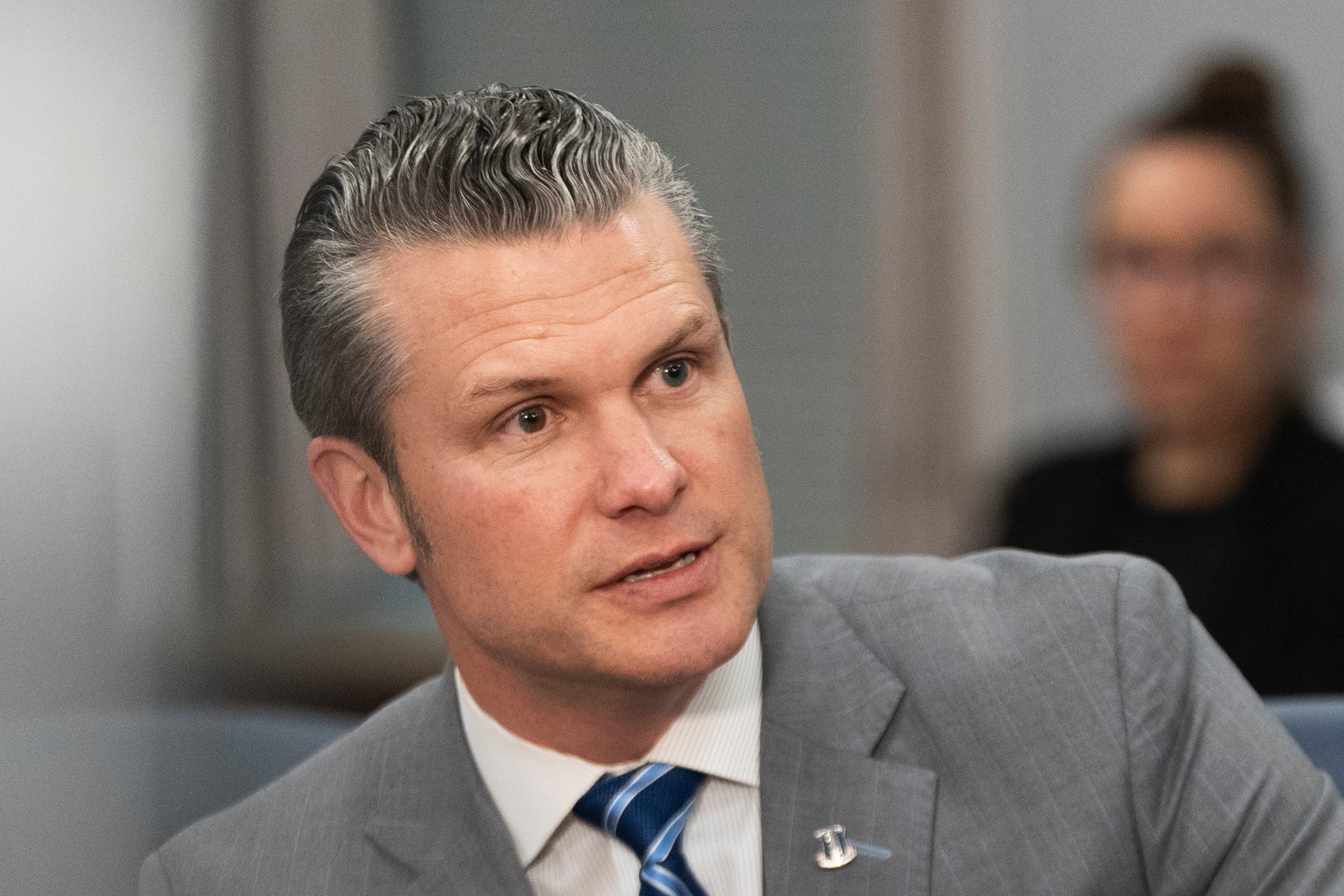With the gator Navy busy and undersized, officials hope the duct tape that covers the remaining gaps are the civilian-crewedships of Military Sealift Command.
Military Sealift Command may prove to be the duct tape that will cover cracks and gaps caused by a naval force stretched beyond capacity.
Top officials are confident that mobile landing platforms, pre-positioning ships, the joint high-speed vessels and even tankers can ease the mission load. burden of a surface Navy inundated with maritime security and mine clearing missions, disaster response, and partner training. Adm. Bill Gortney, who ended his run as head skipper of Fleet Forces Command on Nov. 24, is among the supporters.
"Can we use a lower-cost capability to do some of those low-end missions? Absolutely," said Gortney, who is a strong candidate to become the next chief of naval operations. "If we can provide the same capability for lower cost, and that frees up more money for readiness of the rest of the force or to recapitalize more of the high-end assets, that's what we need to do."
The auxiliary ships of MSC are becoming more central to fleet operations as demonstrated in the recent Bold Alligator exercise, which included the joint high-speed vessel Choctaw County. JHSVs and other MSC vessels can augment amphibious operations -- once a fleet mainstay -- but have their own complexities, including putting their civilian crews in the middle of dangerous operations.
The fleet remains well short of the Marine Corps' stated goal of 38 amphibious ships; it had 31 as of December, according to the Naval Vessel Register.
Closely tied in is the issue of cost. Building new a JHSV costs about $180 million, about one-third the cost of a littoral combat ship. It has a crew of fewer than 30 civilians with an annual operating cost of $26 million, according to MSC data. In comparison, the LCS has a core crew of 50 sailors and mission-module crews of 15 to 20 sailors, and costs $79 million to operate annually, according to the Government Accountability Office. A frigate has 170 sailors and costs $54 million in annual operations costs, while a destroyer has approximately 250 sailors at an annual cost of $88 million.
On the other hand, MSC ships have their drawbacks. They are not manned to fix battle damage and are crewed by Navy civilians, raising questions about how much they can participate in an offensive action like an amphibious assault under the laws of war. by civilian cdesigned to take a hit and keep fighting, and laws of war come into play since they are manned by civilian crews. But from a practical standpoint, recent exercises have put MSC ships to the test in uncontested sea space, and found them up to the task.
The Choctaw County served as a launch pad for special operators, launched riverine and diving teams, and delivered a host of fuel trucks in Bold Alligator 2014, which concluded in early November. The dry cargo ship Medgar Evers also served as an alternate command, control, operational and logistics platform.
Similarly, the dry cargo ships Lewis and Clarke, and the Sacagjawea – the first two of their dry cargo and explosives handling class – have proved to "offer tremendous flexibility to the Marines" in pre-position missions, said Rear Adm. Larry Jackson, MSC's deputy commander. They have conducted flight ops with the MV-22 Osprey and successfully implemented the command and control suite in recent exercises. And the afloat forward staging base-Interim Ponce continues to prove its worth in the Persian Gulf, where the non-combatant ship (with a hybrid crew of 55 sailors and 165 civilians) conducts mine clearing and partner training.
Officials and analysts are urging the Navy to move quickly from concept to commitment, and with good reason. The two existing classes of LCS are under intense scrutiny from Pentagon leaders. Modifying and procuring the LCS is proving difficult. There is little money for new ships, and those that remain are burdened by maintenance backlogs and the retirement of frigates in 2015.
One proponent is Bryan Clark, senior fellow at the Center for Strategic and Budgetary Assessments, believes that . His latest analysis, "Commanding the Seas: A Plan to Reinvigorate U.S. Navy Surface Warfare," was released Nov. 24. Among his observations: the continuing shortfall in small surface combatants will mean higher op tempo for those that remain, to include cruisers and destroyers, which should be protecting flattops, providing ballistic missile defense, conducting anti-submarine warfare, and the like.
"The mission package concept should be expanded and separated from only being associated with the LCS program," Clark, a former adviser to the chief of naval operations, wrote in his Nov. 24 report, "Commanding the Seas: A Plan to Reinvigorate U.S. Navy Surface Warfare."
"This would enable … noncombatant ships to do [small surface combatant] missions that otherwise would fall to large surface combatants," his report said. "The self-contained combination of operators and equipment associated with mission packages enables these capabilities to be deployed on other Navy, Coast Guard, and Department of Transportation ships."
Clark sees no reason to stop there. Heis recommended the Navy evaluate other mission packages such as signals intelligence, airborne surveillance, counter-illicit trafficking, and electronic warfare.
MSC is also interesting in new ways to augment Navy missions, the MSC deputy commander said.
"The ideas are coming fast and furious from all corners of the Navy, which is good," Jackson said. "We're having those discussions with fleet customers not on a daily basis, but certainly on a regular basis. We don't even know what missions we will be called on to do in the future, but we are doing our best to explore all of the opportunities."




